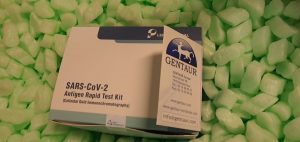The porcine translational research database: a manually curated, genomics and proteomics-based research resource.
The use of swine in biomedical research has increased considerably over the last decade. Various genomic and proteomic databases have been developed to facilitate research with human models and rodents. The databases of current swine genes, however, lack the robust annotation to study pork models that are relevant for human studies and a comparative assessment with rodent models. In addition, they contain a significant number of errors because of their greatest confidence in the annotation based on the machine. To respond to these gaps, a comprehensive literature survey was performed to identify some selected genes that have demonstrated the function in humans, mice or pigs.
The process identified 13,054 genes / proteins of human, cattle, mouse or rat candidates used to select potential pork counterparts by searching for several online sources of information on pig genes. Data from the porcine translationary search database are supported by> 5800 references and contains 65 data fields for each entry, including> 9700 unambiguous pig sequences (5 ‘and 3’),> 2400 dosages of Real-time PCR and Reactivity Information on> 1700 Antibodies. It also contains gene expression data and / or proteins for> 2200 genes and identifies and corrects 8187 errors (genes duplication artifacts, macs-assemblies, annotation errors and incorrect species assignments) for 5337 genes Porcins.
This database is the largest database manually controlled for any single veterinary species and is unique among the porcine gene databases with respect to gene expression binding to the gene function, identifying the channels of Related gene and data connection with other porcine gene databases. This database provides the first comprehensive description of three super-families or groups of protein proteins (differentiation marker groups (CD), superfamil of solute operators, a binding cassette at ATP) and A comparative description of the micro-porcine.
Fusion of clinical chemistry biomarker data with a CPOC database – Building a clinical infrastructure for proteomic studies.
Data from biological samples and medical assessments play a key role in clinical decision-making. These data are also important in clinical studies and it is essential to have an infrastructure that guarantees that its quality is preserved throughout its life. We manage a longitudinal clinical study of 5 years, Kol-Örestad, with the aim of identifying new Biomarkers from COPD (chronic obstructive pulmonary disease) in the blood. In the study, clinical data and blood samples are collected from private and public health care facilities and stored in our research center in databases and biobanks, respectively. The blood is analyzed by mass spectrometry and the results of this analysis are then linked to clinical data.
We have built an infrastructure that allows us to efficiently collect and analyze the data. We have chosen to use redcap as an EDC tool (electronic data capture) for the study because of its short duration, ease of use and flexibility. Redcap allows users to easily design data collection modules based on existing models. In addition, it provides two functions that allow users to import data batches; Via a Web API (application programming interface) as well as by downloading CSV files (comma separated values).
We have created software, DART (Fast Data Translation), which translates our biomarker data into format that matches the redcap CSV models. In addition, DART is configurable to work with many other data formats. We use DART to import our clinical chemistry data into the redcap database. We have shown that an EDC tool to adopt powerfully and internationally such as redcap can be extended to be used effectively in proteomic studies. In our study, we do it using DART to translate our clinical chemistry data to a format that corresponds to redcap models.

BISK: Conversion of locus and variant of genomic, transcriptomic and proteomic database identifiers.
Organic sequence databases are an integral part of efforts to characterize and understand biological molecules and share biological data. However, during the analysis of these data, scientists are often left to the holding of disparate biological molecular identifiers from different databases. For downstream applications that require converting the identifiers themselves, many resources are available, but the analysis of reins and associated variants can be heavy if the data is not given under a suitable form for specific analyzes. We present here the bisque, a web server and a customizable command line tool for the conversion of molecular identifiers and their locuents and variants contained between different database conventions. Bisque uses a graphic treshasse algorithm to generalize the conversion process for residues of the human genome, genes, transcripts and proteins, allowing conversion between molecule classes and in all directions via an intuitive web interface and a service Web based on the URL.
The purpose of this study was to create an open access repository of validated liquid chromatography mass spectrometry (LC-MS / MS) of multiple reaction monitoring methods (MRM) to quantify 284 large proteins associated with absorption , distribution, metabolism and excretion (add me). Various in silico and experimental approaches have been used to select substitution peptides and optimize the parameters of the instrument for the lc-ms / ms quantification of the selected proteins. The final methods have been downloaded from an online public database, which provides essential information for the development of easy methods in quadrupole triple mass spectrometry instruments (MS).
To validate the usefulness of the methods, the differential tissue expression of 107 key intake proteins has been characterized by the tryptic digester of the subcellular fractions grouped with human liver, kidneys, intestines and lungs. These methods and data are essential for the development of physiology-based pharmacokinetic models (PBPK) to predict Xenobiotic disposition.
Related Posts

Detailed tail proteomic analysis of axolotl (Ambystoma mexicanum) using an mRNA-seq reference database.

Full-featured, real-time database searching platform enables fast and accurate multiplexed quantitative proteomics.

